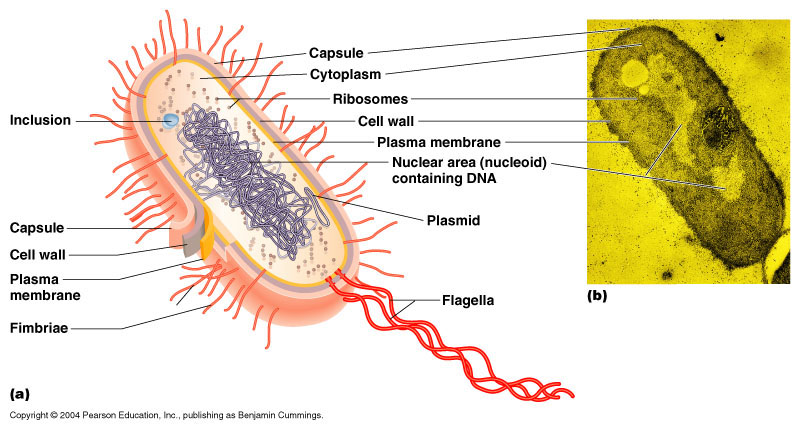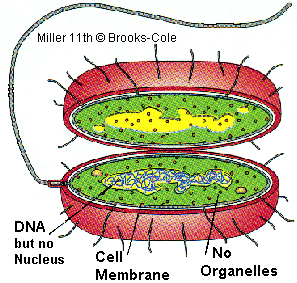|
Prokaryotic Cells
|
|
|
|
|||
|
Cells that lack a membrane-bound nucleus are called prokaryotes (from the Greek meaning before nuclei). These cells have few
internal structures that are distinguishable under a microscope. Cells in the monera kingdom such as bacteria and cyanobacteria
(also known as blue-green algae) are prokaryotes.
this is another diagram pic of a prokaryotic cell
|
library.thinkquest.org/C004535/prokaryotic_cells.html
|
||


